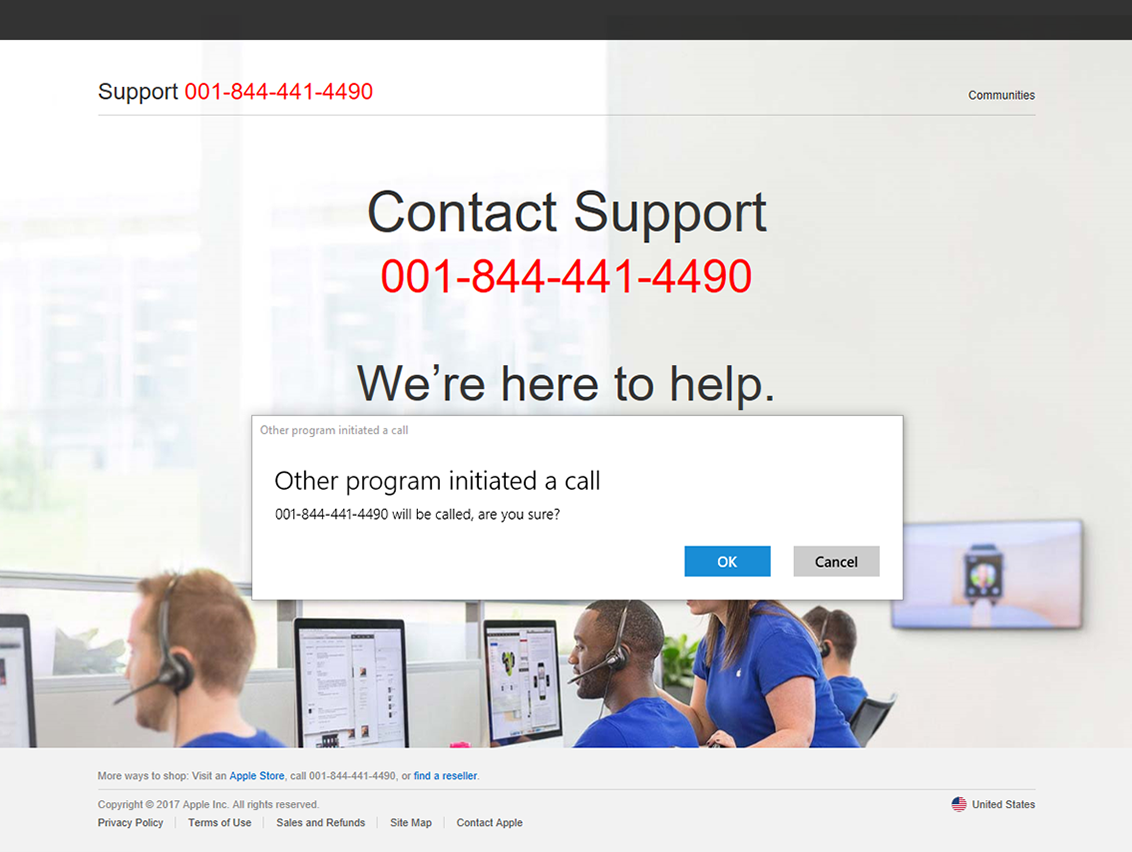If You See: “You are Infected, Call Microsoft Support” - Don’t Call Them, Call Us!
/You’re searching the web as usual and suddenly, you get to a site and a big warning message pops up saying, “You are infected, call Microsoft Support!” It may even include an “immediately” in there for good measure.
Your screen is locked, and you can’t seem to get out of the message. What should you do?
The last thing you should do is call the number that it gives you because it’s a fake. Instead, you should call BrainStomp for IT support so we can help you remove the malicious code from your system, which may infecting other devices on your network.
This “Microsoft Support” scam has been around for quite a while, but it still manages to get people to call the fictitious number and do whatever the person on the other end of the line tells them.
This usually involves them having the user install a software that will allow the scammer to completely take over the victim’s device and access everything on it.
It’s important to note that it’s not only Microsoft Windows users that get these fake support scams from malicious websites. Apple users also get them as well with notices to call “Apple Support.”
How Does the Microsoft Support Scam Work?
This type of support scan can also come via phone, but robocalls have caused many people to ignore calls from numbers they don’t recognize. So, often the scam comes when you land on a website infected with malicious code.
The code can be on a webpage put up by a scammer or it can be on a site you may have visited before from a trusted source, but a hacker has gotten into their server to add the code.
A pop-up window will appear, and it may lock your browser into full screen mode, making it difficult to get out of.
The scam will state that something is wrong with your computer and you should call Microsoft Support to get help. It will give a number to call, but that number is not to Microsoft.
How do we know? Because Microsoft states that real Microsoft error and warning messages never include phone numbers.
Here is an example provided by Microsoft showing one of these support scam messages. This particular code automatically initiates any calling apps that you have on your computer, so that as soon as you hit the “OK” button, you’re connected to the scammer.
Notice the imagery is designed to look legitimate and like something that might come from Microsoft, this is how many people are fooled.
What are Scammers After?
There are a few different things that this type of scammer can be after once you call and they offer fake help for the “problem.”
· Payment Details: Some scams will ask you to pay a one-time fee or service subscription to resolve the issue. This scam is after your credit card information.
· System Takeover: It’s common for the person you speak to after calling the number to direct you to a page that has you download a connection client on to your system. This will allow them to takeover your computer to use it for things like sending phishing, bot attacks, and more.
· Steal Logins & Sensitive Info: Another thing that a scammer can do after getting you to download a digital gateway app to access your computer is steal sensitive information. This can be anything from your online banking login to company files.
How to Protect Against Fake Support Scams
Here are several tips to help protect against these tech support scams.
Know that Microsoft Doesn’t Initiate Support Contact
Microsoft states that it will not send any unsolicited email messages, make unsolicited calls, or offer to fix your computer without you asking first.
Any request for help or support from Microsoft has to be initiated by you. So, if you get an unsolicited pop-up or phone call purporting to be from Microsoft Support, it’s a fake.
Do Not Call the Number in the Pop-ups
There are trained scammers on the other end of those fake phone numbers on the Microsoft support scam pop-ups and they know what to say to lure people in.
Do not call the number and do not click to initiate a call if the malicious site has brought up your calling app.
Do Not Download Software from Unknown Third-Party Sites
In many cases, the scammer will ask you to download software from a site that is NOT an official Microsoft site. This can be malware, a remote connection app, or another type of dangerous application.
You should never download software from non-official websites.
Did You Get a Microsoft Pop-Up or Error Message?
If you’ve visited a malicious site and received an error message or other Microsoft tech support pop-up, your system may already be infected with malware. Call BrainStomp right away and we’ll take care of the problem.
Contact us any time at 260-918-3548 or reach out online.


